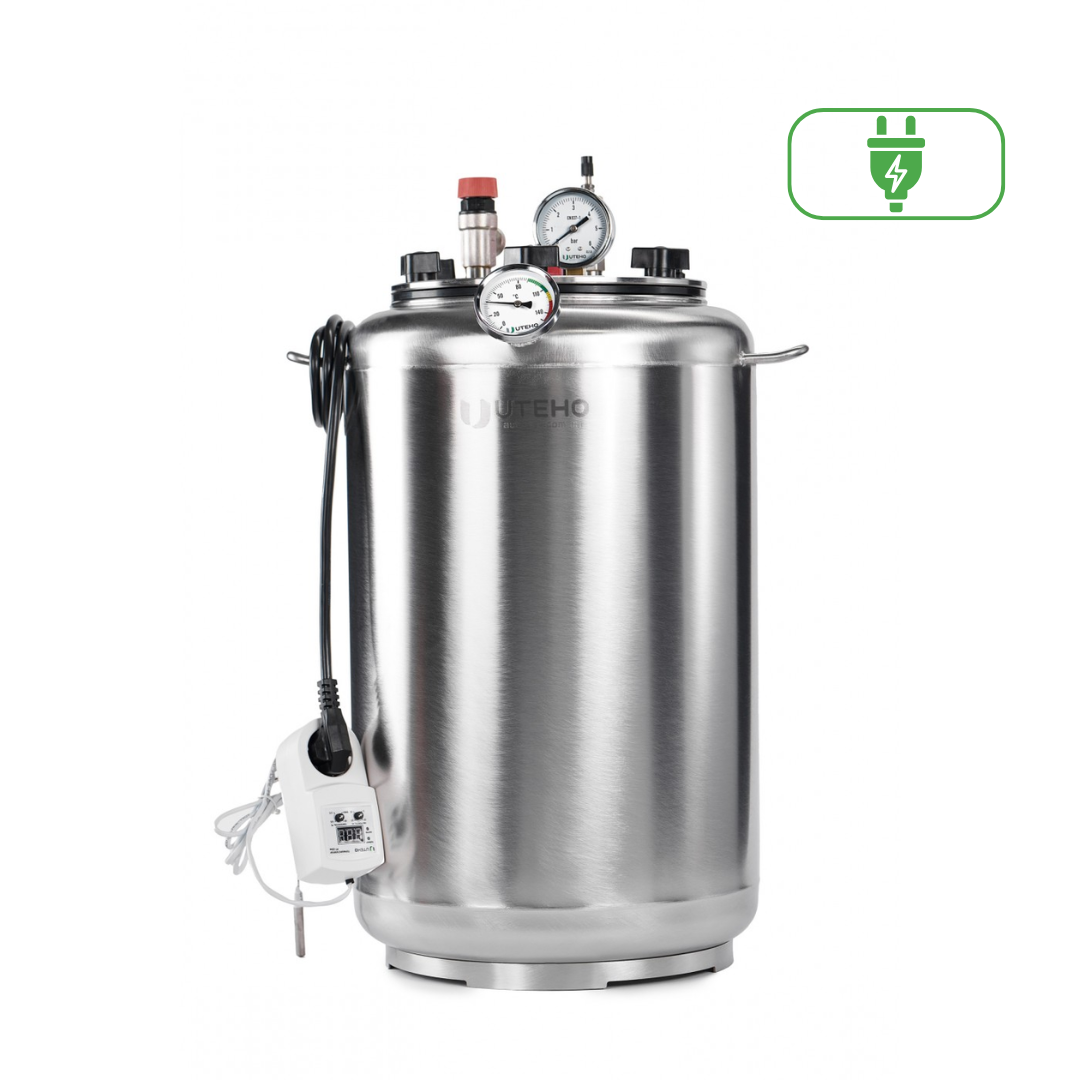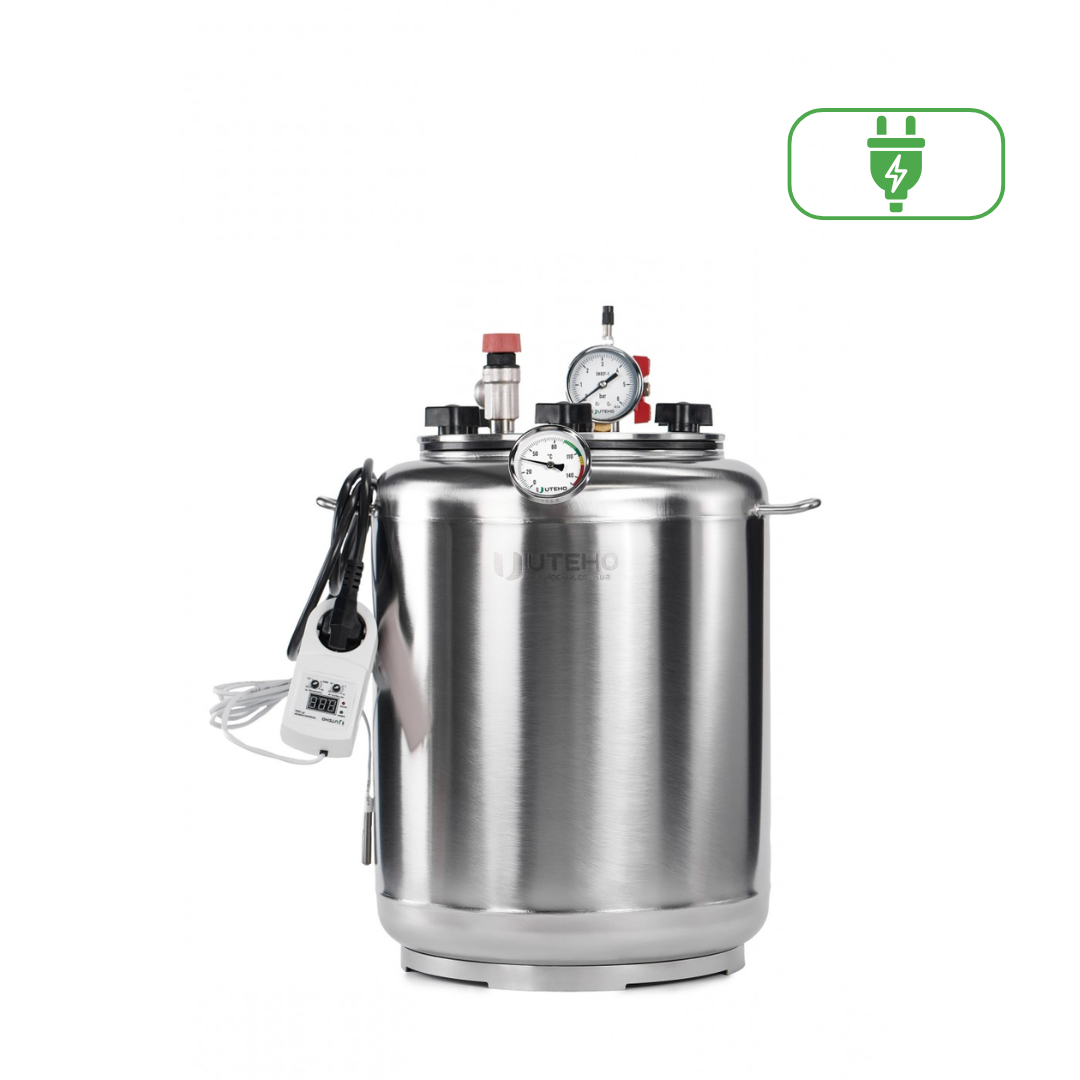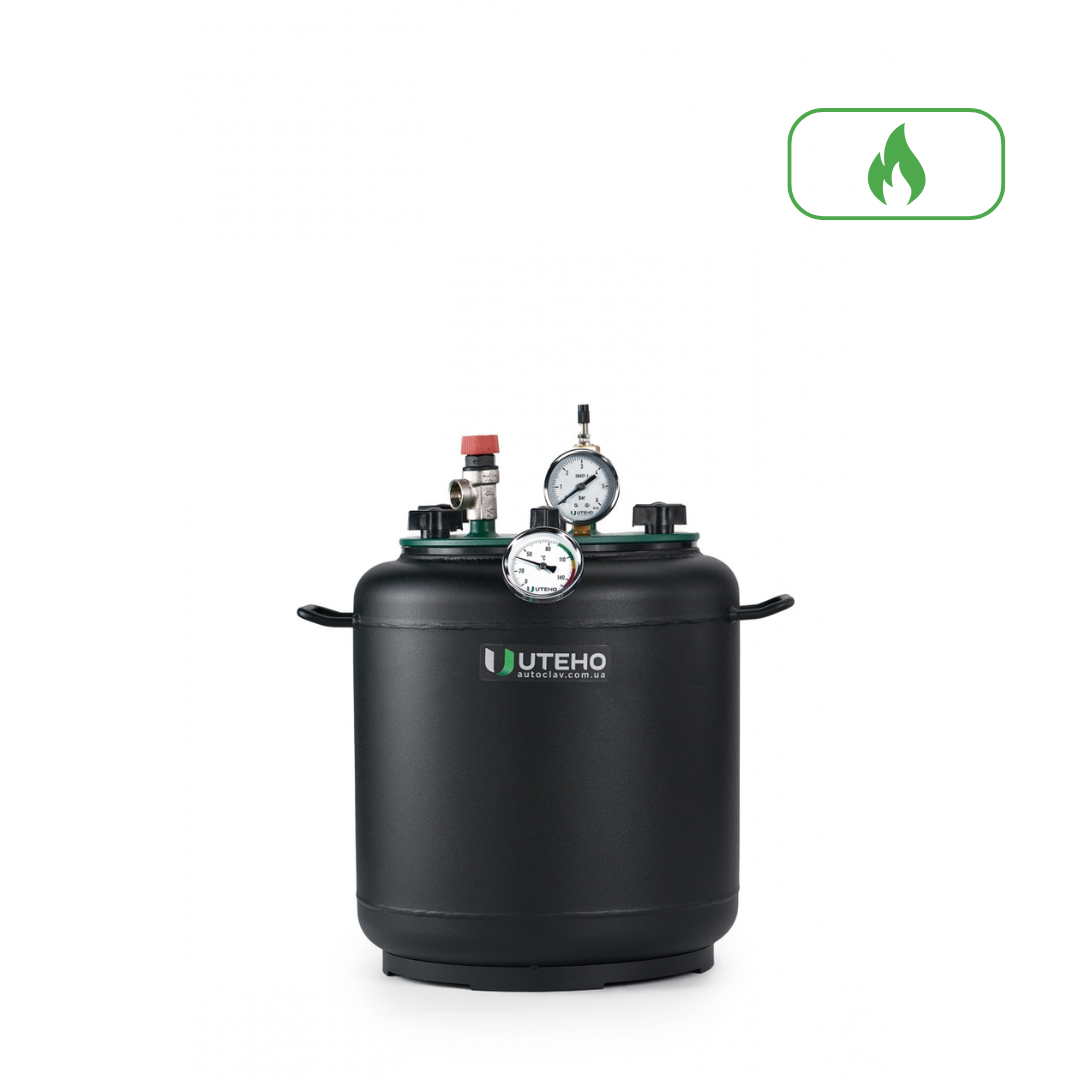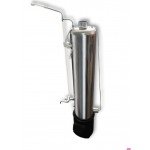
Fish Preserves in an Autoclave
Cooking fish preserves in an autoclave is much easier than using traditional home canning methods. The principles of sterilization under pressure make it possible to reduce the canning time by 3–4 hours. This will allow you to obtain a large volume of finished product with minimal effort.
Preparation for Cooking Fish in an Autoclave
Sterilization using an autoclave. This method is usually used for processing medical instruments thanks to the use of moist heat under pressure. The sterilization time in this way depends on factors such as temperature, the type of autoclave, and the type of microorganisms being targeted.
For most recipes, it is sufficient to place raw cleaned fish into jars—it will cook during sterilization until fully done, including softening of the bones. The temperature regime will ensure the destruction of all microorganisms. Autoclaving allows you to preserve the taste and beneficial properties of fish preserves. In addition, many recipes are available: you can cook fish in oil and in tomato, make stew and pâté from it.
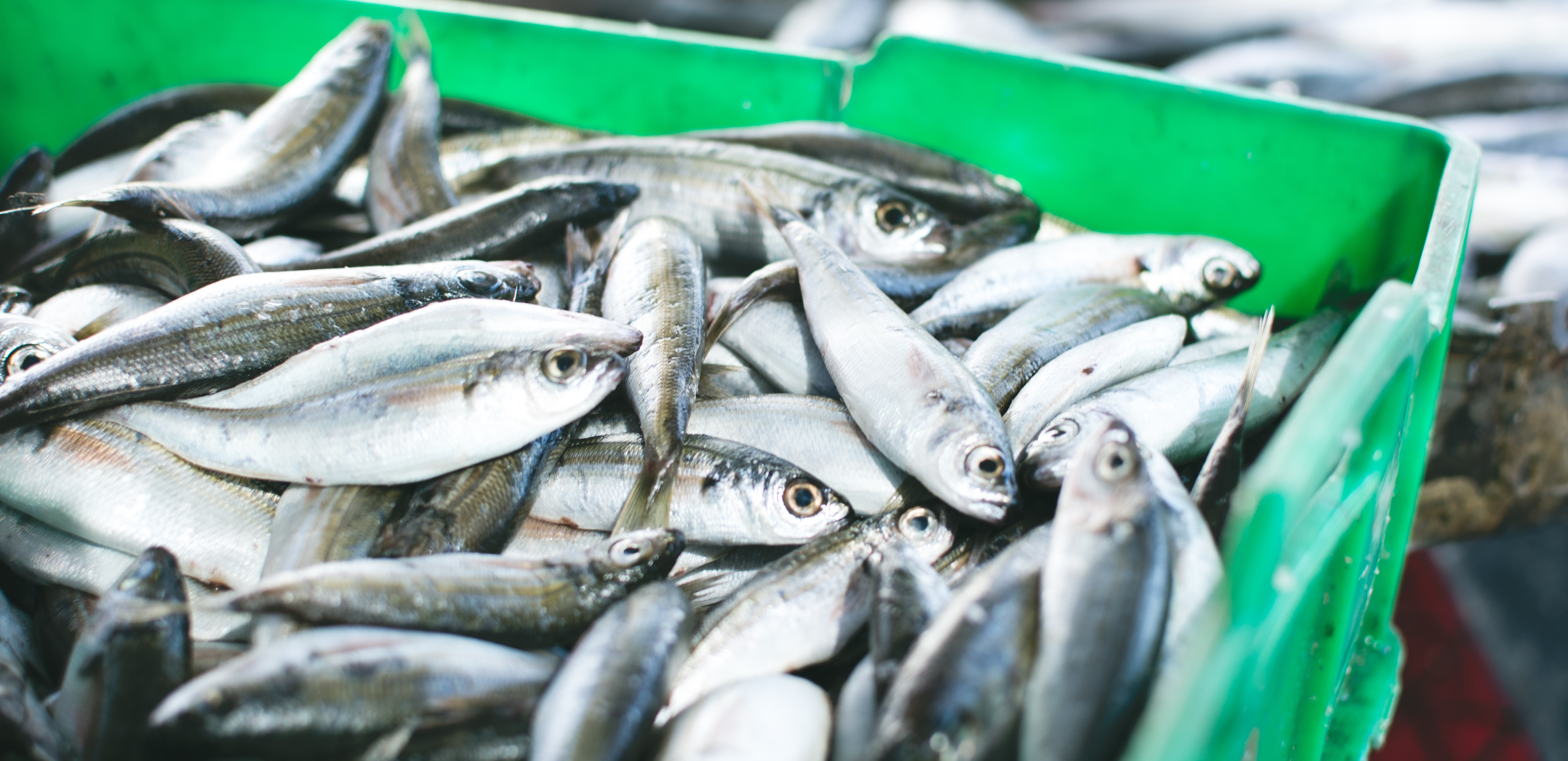
Small fish can be canned in an autoclave by simply gutting them—even the fins do not need to be trimmed, as they will also boil down. If fish pieces are canned in oil, it is better to fry them lightly without breading—this helps maintain their shape. For the same purpose, you can add a little sugar to each jar. To make the flavor richer, standard seasonings—bay leaf and pepper—can be diversified with coriander or cumin.
How to Properly Can Fish in an Autoclave
Any fish can be used to prepare preserves in an autoclave: mackerel, bream, sprat, perch, bighead carp, pike, gobies. It is better to take fresh fish, but defrosted fish is suitable in a pinch. The autoclaving algorithm is simple: the sealed jars need to be placed in the autoclave and filled with cold water above the lids. Then gradually build up pressure and temperature, and when they reach the required limits—start timing and begin sterilization. At the end, simply wait for it to cool and remove the finished preserves.
We have prepared a convenient table of universal values of temperature and sterilization duration for fish preserves depending on the volume of jars used.
If the thermometer is at the top of the autoclave:
| Jar volume, L | Sterilization temperature, degrees Celsius | Sterilization duration, min |
|---|---|---|
| 0.35 | 105 | 30 |
| 0.50 | 105 | 30 |
| 1.00 | 110 | 35 |
Bring the contents to 105°C. Monitor the temperature. To preserve the taste of the product, it should not exceed 110°C. Cooking time is 30–35 minutes.
If the thermometer is located at the bottom on the body of the autoclave:
| Jar volume, L | Sterilization temperature, degrees Celsius | Sterilization duration, min |
|---|---|---|
| 0.35 | 115 | 30 |
| 0.50 | 115 | 30 |
| 1.00 | 120 | 35 |
Bring the contents to 115°C. Monitor the temperature. To preserve the taste of the product, it should not exceed 120°C. Cooking time is 30–35 minutes.
Recipe for Fish Stew in an Autoclave

Tasty fish preserves in an autoclave are prepared in the form of a stew. For one half-liter jar, you will need the following ingredients:
- gutted river fish – 500 g;
- salt – 1 tsp;
- black pepper – 5 pcs.;
- sunflower oil – 1 tbsp.;
- seasonings.
Cut the fish into small pieces and place the first layer on the bottom of the washed jars. Add salt, oil, spices, and pepper on top. Then another layer of fish—and so on up to the top. Leaving a little space before the lid, seal the jars and place them for processing in the autoclave. You can slightly improve the recipe by lightly (but not fully) frying the fish pieces. The taste will become even richer, and most importantly—the pieces will not boil down and fall apart.
There is also another recipe. For it you need:
- small fish – 2 kg;
- carrot – 2 pcs.;
- onion – 1 pc.;
- salt – 1 tbsp.;
- water – 1.5 L;
- sunflower oil – 150 ml;
- tomato juice or paste – 2 tbsp.;
- a pinch of sugar.
Clean the fish, cut off the heads, wash. Peel and chop the carrot and onion. In washed jars, layer the fish, onion, and carrot alternately to the very top. Separately mix water with oil, spices, tomato paste, and other components. Pour the resulting mixture into the jars. Do not forget to leave a gap of about 2 cm to the lids—this is necessary because the liquid will expand when boiling. Seal the jars and send them to the prepared autoclave for sterilization.
BESTSELLERS
Fish in Oil in an Autoclave

You can prepare classic fish preserves in an autoclave in oil using the following ingredients (for a 0.5 L jar):
- fish, gutted and beheaded – 500 g;
- black peppercorns – 3 pcs.;
- sunflower oil – 15 g;
- salt – 5.5 g;
- bay leaf – 1 pc.
Wash the jars and lids, cut the fish into small pieces (about 80 g each), place pepper and bay leaves on the bottom of the jars. Mix the fish pieces with salt, place them in the jar (do not forget the gap before the lid), and pour oil on top. Then seal the jars, place them in the autoclave, and begin sterilization.
Another recipe for fish preserves in oil in an autoclave offers a richer flavor profile. For it you will need the following components:
- river fish – 1 kg;
- carrot – 700 g;
- onion – 700 g;
- sunflower oil – 3 tbsp. per half-liter jar;
- peppercorns, salt – to taste.
Gut, clean, and wash the fish, cut into pieces, coat with salt and place in an enameled container for at least 60 minutes. Grate the carrot (you can chop it in a processor), cut the onion into rings, mix with the fish. Pour oil into half-liter jars, place the fish with vegetables (but do not tamp), leaving 1–2 cm to the lid. Close the jars and send them for sterilization.
Fish in Tomato in an Autoclave
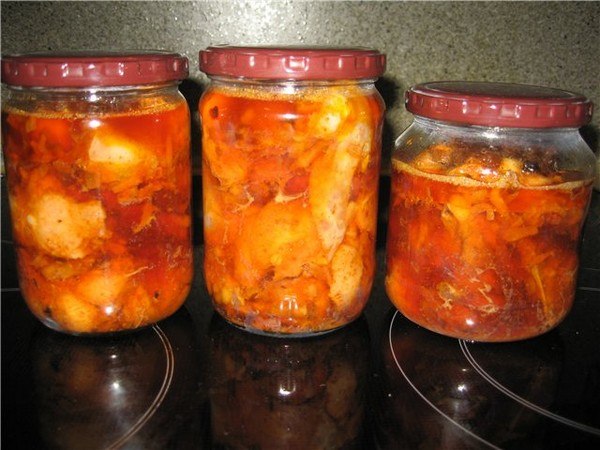
Delicious fish in an autoclave at home means tomato preserves, which are mainly prepared from sprat and gobies. We will list both recipes. To prepare sprat in tomato in an autoclave, you need the following products:
- fresh-frozen sprat – 3 kg;
- tomatoes – 5 kg;
- sweet pepper – 1 kg;
- onion – 1 kg;
- carrot – 2 kg;
- salt – 2 tbsp.;
- 9% vinegar – 270 ml;
- a little sugar.
Grind the tomatoes in a meat grinder, grate the carrot or chop it in a processor, cut the onion into half rings, and the pepper into strips. Mix the chopped vegetables with the resulting tomato juice. Add the sprat to the mixture, as well as salt, pepper, sugar, and vinegar, and mix thoroughly. Pour the finished mixture into clean jars, leave a little space up to the lids, and seal. All that remains is to start the sterilization process.
Recipe for Gobies in Tomato in an Autoclave
Another tasty and popular fish preserve in an autoclave at home is gobies in tomato. To prepare them, you need the following components:
- gobies – 1 kg;
- tomatoes – 2 kg;
- salt – 1 tbsp.;
- sunflower oil – 150 g;
- onion – 300 g;
- clove, peppercorns, bay leaf – 4 pcs. each;
- sugar – 5 tbsp.;
- 9% vinegar – 3 tbsp.
Clean the fish and cut off the heads, mix with salt and leave for 30 minutes. Boil the tomatoes and pass them through a sieve. Add spices, sugar, sunflower oil, and vinegar to the resulting juice. It is best to lightly fry the gobies without breading (but not until done). Mix the fish with the tomato juice, place in jars, close, and put in the autoclave.
In all three listed recipes, you can use ready-made tomato juice (only high-quality) or tomato paste. But if preserves are being prepared in the summer, it is better to choose fresh tomatoes—the taste will only benefit.

Other Recipes for Canned Fish in an Autoclave
You can prepare small fish in an appetizing marinade. For this you need the following products:
- fish – 5 kg;
- water – 5 L;
- sugar – 3 tbsp.;
- salt – 1.5 tbsp.;
- allspice – 3 g;
- cloves – 2 g;
- coriander – 3 g;
- 6% vinegar – 100 g;
- bay leaf – 1–2 pcs.
Add spices to the water, bring to heat, wait for it to boil and immediately turn it off. Then add the cleaned fish to the marinade and leave for 4 hours. Next, place the prepared fish in jars, add bay leaf and pour in the marinade. Close the jars and place them in the autoclave for processing.
You can even prepare “sprats in oil” in an autoclave—any small fish will do. The list of ingredients is as follows:
- fish – 1 kg;
- onion – 200 g;
- sunflower oil – 100 g;
- water – 150 g;
- 9% vinegar – 50 ml;
- salt and spices.
For the production of “Large Sprats,” Baltic herring (saithe) larger than 12 cm in length is used. Other fish are also possible: Baltic and Caspian sprat, White Sea or Atlantic herring, anchovy.
Clean the fish, remove the head and entrails, rinse. Tails and fins can be left. Cut the onion into rings. Place a layer of onion on the bottom of the jars, alternate it with a layer of fish—up to the very top. Add peppercorns and bay leaf on top, oil, vinegar, and water. Close the jars and set for sterilization. During autoclaving, the bones will soften, the fish will be well saturated with oil and spices, and the characteristic, familiar “sprat” taste will result.
Sterilization using an autoclave. This method is usually used for processing medical instruments thanks to the use of moist heat under pressure. The sterilization time in this way depends on factors such as temperature, the type of autoclave, and the type of microorganisms being targeted.
Read also:







.png)
